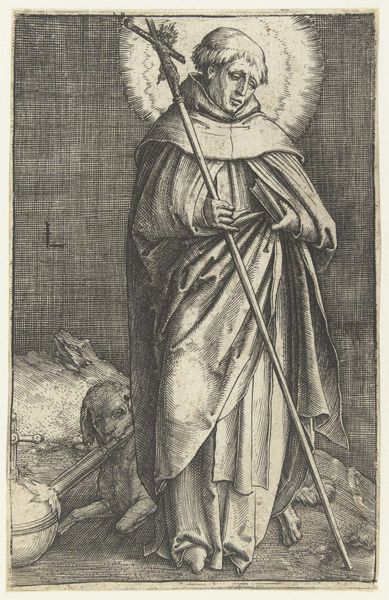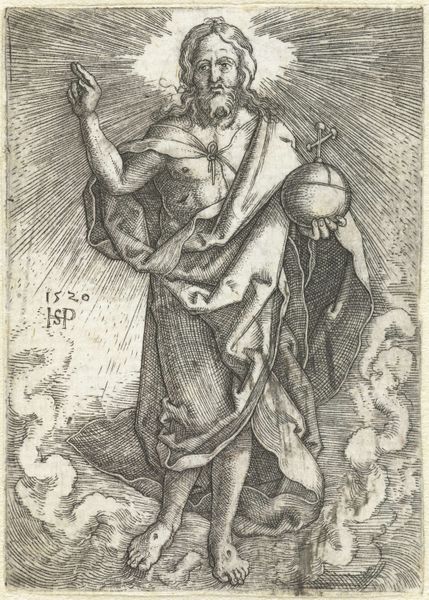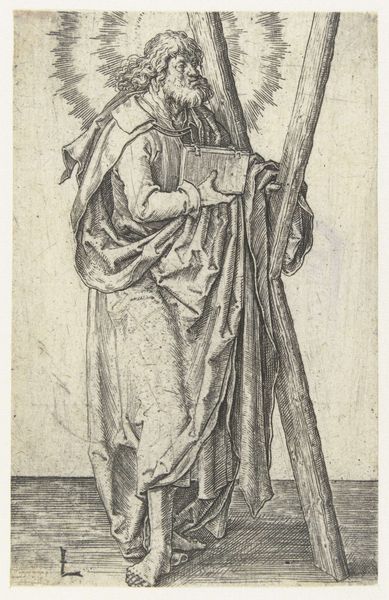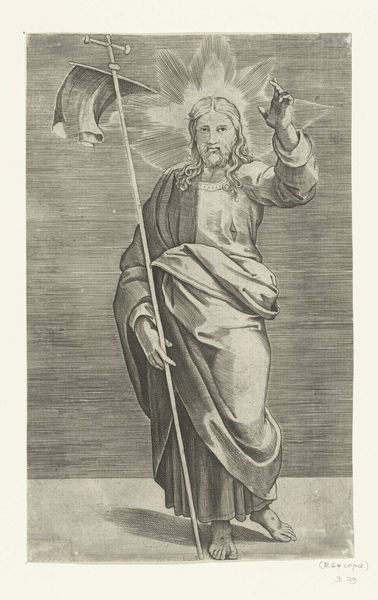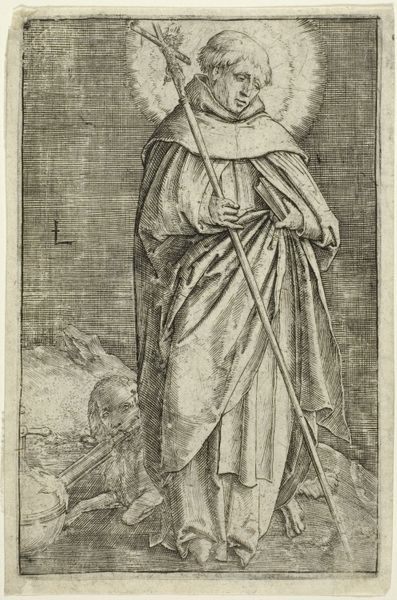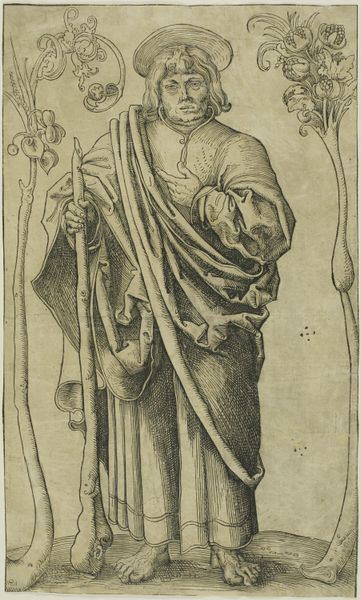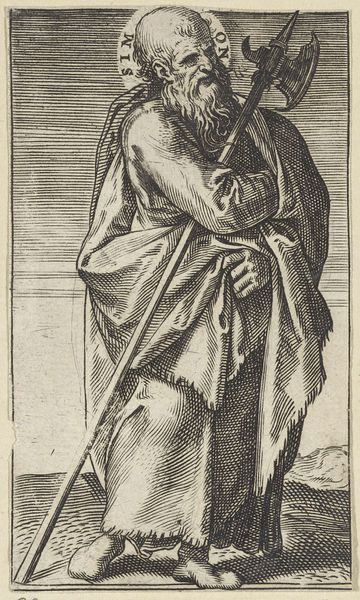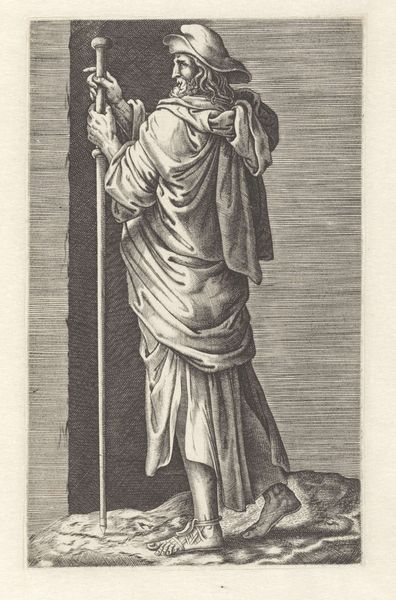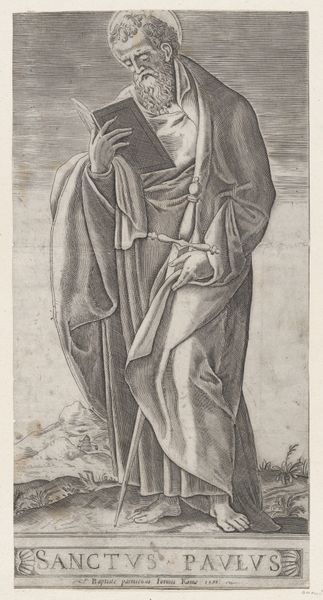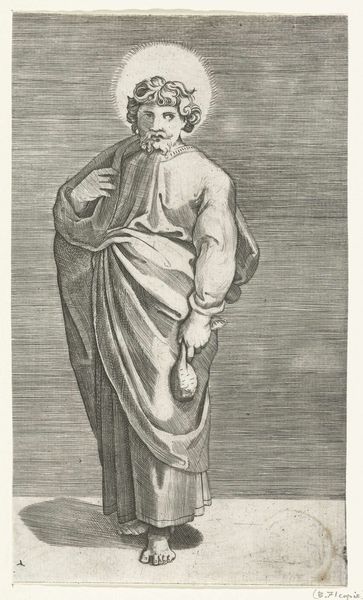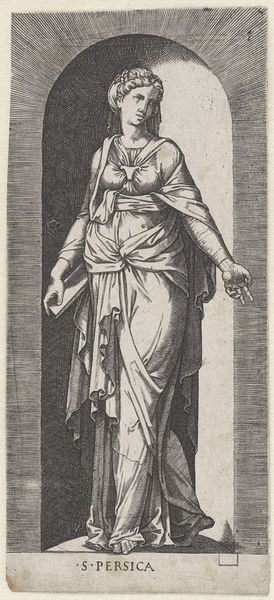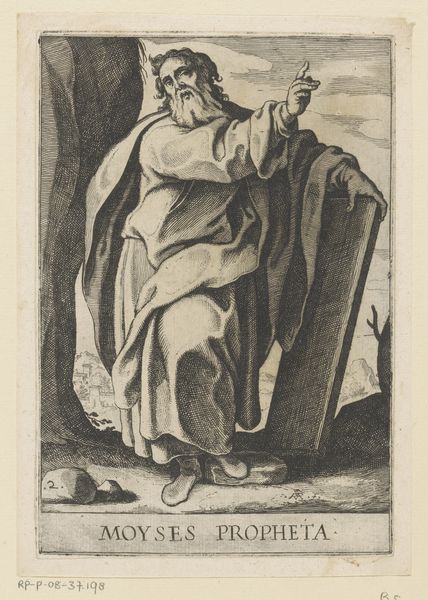
print, engraving
#
portrait
# print
#
old engraving style
#
11_renaissance
#
portrait drawing
#
history-painting
#
italian-renaissance
#
engraving
Dimensions: height 206 mm, width 132 mm
Copyright: Rijks Museum: Open Domain
Editor: This engraving, "Christus als Salvator Mundi" by Marcantonio Raimondi, was made sometime between 1517 and 1527. The figure of Christ seems so central, dominating the entire composition. How do you interpret this work, especially within its historical context? Curator: This print provides insight into the visual culture of the early 16th century. Raimondi was crucial in popularizing the work of Raphael through prints. This image, like many others, served as a powerful tool for disseminating religious iconography to a wider audience beyond the elite who could afford paintings. Consider its function: how does the accessibility of prints alter the consumption of religious imagery? Editor: That's fascinating! So, the print democratized religious art to a degree. The placement of this artwork at Rijksmuseum feels charged given the iconoclasm which swept the Low Countries in the 16th century, does it not? Curator: Absolutely, the iconoclasm informs our understanding of this work. This image may have been consumed very differently across different groups of viewers. Some would appreciate its devotional qualities. However, radical reformers could potentially view such images as idolatrous, prompting lively social and religious debates about images' place. Editor: It’s interesting how one image can have so many interpretations and ignite such strong emotions, highlighting the political role of art in society. I've learned so much. Curator: Indeed. Studying this work deepens our understanding of the complexities of religious reform, artistic innovation, and the rise of print culture in shaping early modern European society.
Comments
No comments
Be the first to comment and join the conversation on the ultimate creative platform.
